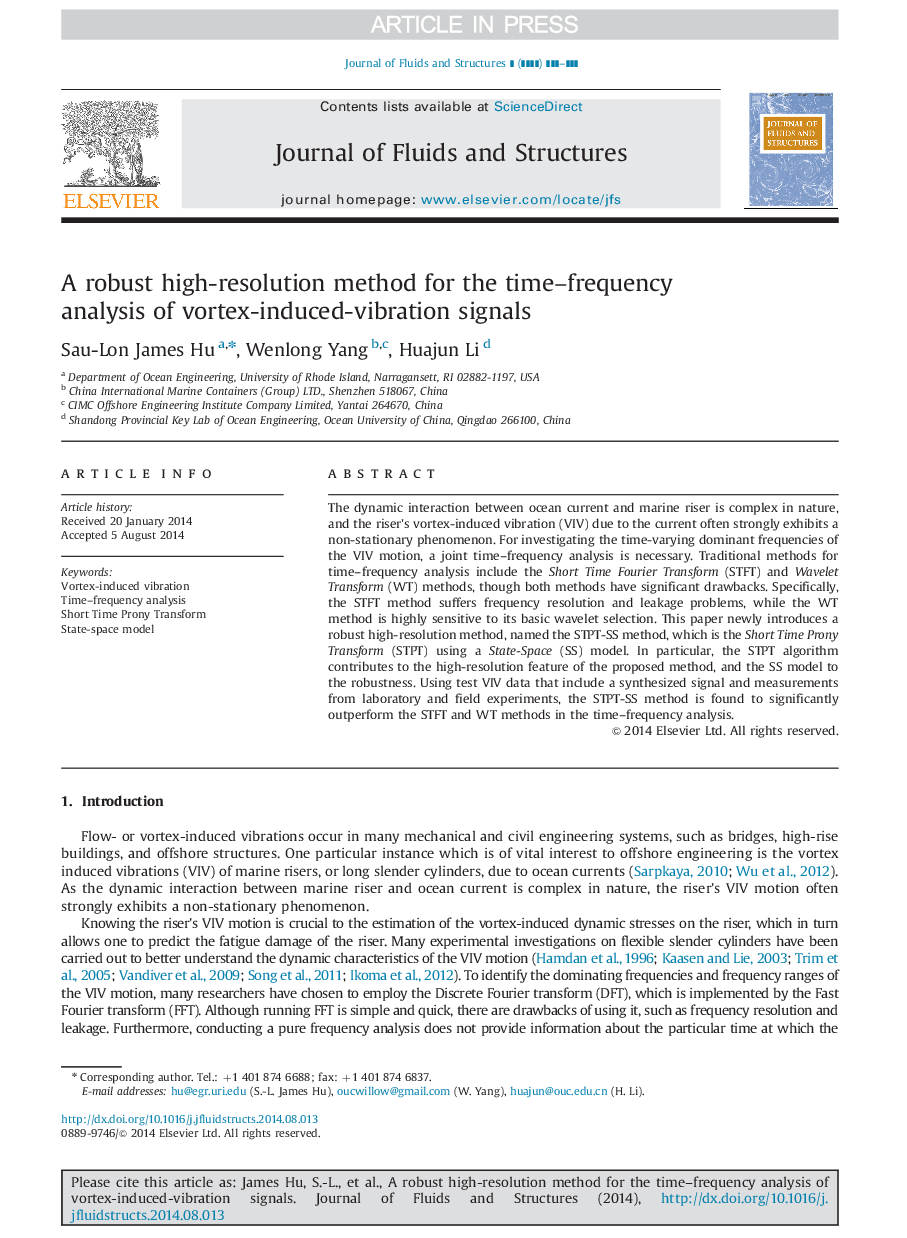| Article ID | Journal | Published Year | Pages | File Type |
|---|---|---|---|---|
| 7176048 | Journal of Fluids and Structures | 2014 | 26 Pages |
Abstract
The dynamic interaction between ocean current and marine riser is complex in nature, and the riser׳s vortex-induced vibration (VIV) due to the current often strongly exhibits a non-stationary phenomenon. For investigating the time-varying dominant frequencies of the VIV motion, a joint time-frequency analysis is necessary. Traditional methods for time-frequency analysis include the Short Time Fourier Transform (STFT) and Wavelet Transform (WT) methods, though both methods have significant drawbacks. Specifically, the STFT method suffers frequency resolution and leakage problems, while the WT method is highly sensitive to its basic wavelet selection. This paper newly introduces a robust high-resolution method, named the STPT-SS method, which is the Short Time Prony Transform (STPT) using a State-Space (SS) model. In particular, the STPT algorithm contributes to the high-resolution feature of the proposed method, and the SS model to the robustness. Using test VIV data that include a synthesized signal and measurements from laboratory and field experiments, the STPT-SS method is found to significantly outperform the STFT and WT methods in the time-frequency analysis.
Related Topics
Physical Sciences and Engineering
Engineering
Mechanical Engineering
Authors
Sau-Lon James Hu, Wenlong Yang, Huajun Li,
